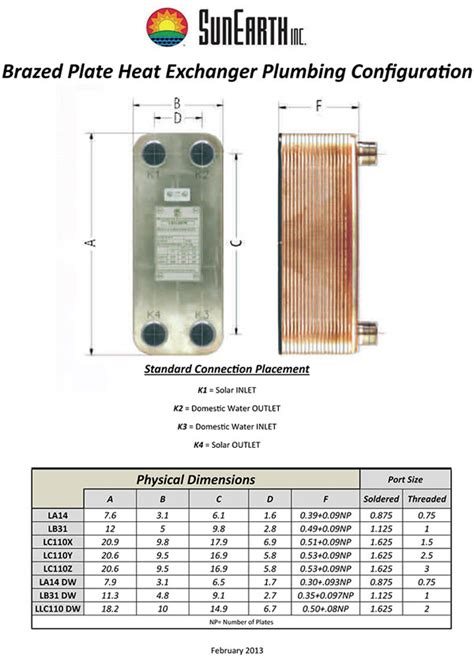How To Size A Heat Exchanger
Ronan Farrow
Mar 26, 2025 · 4 min read

Table of Contents
How to Size a Heat Exchanger: A Comprehensive Guide
Choosing the right heat exchanger for your application is crucial for efficient and effective thermal management. Sizing a heat exchanger incorrectly can lead to underperformance, increased energy consumption, and even equipment failure. This comprehensive guide will walk you through the key steps and considerations involved in accurately sizing a heat exchanger.
Understanding the Fundamentals
Before diving into the sizing process, it's essential to grasp some fundamental concepts:
Key Parameters
-
Heat Duty (Q): This represents the amount of heat that needs to be transferred. It's typically expressed in kilowatts (kW) or British thermal units per hour (BTU/hr). Accurately calculating the heat duty is the foundation of proper heat exchanger sizing.
-
Temperature Differences: The temperature difference between the hot and cold fluids (ΔT) is critical. The larger the temperature difference, the easier (and often more efficient) the heat transfer. We often work with the log mean temperature difference (LMTD) for more accurate calculations in heat exchangers with counter-current or co-current flow patterns.
-
Fluid Properties: Knowing the properties of both the hot and cold fluids (density, specific heat capacity, viscosity) is crucial for accurate calculations. These properties affect the heat transfer coefficient and pressure drop.
-
Flow Rates: The flow rates of both fluids directly impact the heat transfer rate and pressure drop within the exchanger. Insufficient flow can lead to inefficient heat transfer, while excessive flow may lead to higher energy consumption.
-
Overall Heat Transfer Coefficient (U): This value represents the overall effectiveness of heat transfer within the exchanger, considering both the fluids' properties and the heat exchanger's design.
The Sizing Process: A Step-by-Step Approach
The process of sizing a heat exchanger involves a series of calculations and considerations. While software tools can simplify the process, understanding the underlying principles is vital. Here’s a simplified approach:
Step 1: Determine the Heat Duty (Q)
This involves calculating the amount of heat that needs to be transferred. The formula is generally:
Q = m × Cp × ΔT
Where:
- m is the mass flow rate of the fluid
- Cp is the specific heat capacity of the fluid
- ΔT is the temperature change of the fluid
Step 2: Determine the Log Mean Temperature Difference (LMTD)
The LMTD accounts for the varying temperature differences along the heat exchanger's length. The formula is more complex and depends on the flow arrangement (countercurrent or cocurrent). You'll typically find this calculation in heat transfer textbooks or online resources.
Step 3: Calculate the Required Heat Transfer Area (A)
With the heat duty (Q) and LMTD calculated, the required heat transfer area (A) can be determined using the following fundamental equation:
Q = U × A × LMTD
Solving for A:
A = Q / (U × LMTD)
This formula highlights the importance of the overall heat transfer coefficient (U).
Step 4: Select a Heat Exchanger Type and Design
The type of heat exchanger (shell and tube, plate and frame, etc.) depends on various factors, including the fluids' properties, pressure, temperature, and the required heat duty. Each type has its own design considerations and efficiency characteristics.
Step 5: Verify Pressure Drop and Flow Distribution
Once a preliminary design is selected, it's crucial to verify that the pressure drop across the heat exchanger is acceptable and that the flow distribution is even. Excessive pressure drop can increase energy consumption and potentially damage the system.
Step 6: Iterate and Refine
The sizing process often requires iteration. You might need to adjust parameters like flow rates or choose a different heat exchanger type to meet the desired performance criteria.
Beyond the Calculations: Crucial Considerations
Accurate sizing isn't just about formulas. Here are other vital factors:
-
Fouling: Consider the potential for fouling (the buildup of deposits) on the heat transfer surfaces. This reduces the heat transfer effectiveness over time. You may need to add a fouling factor to your calculations.
-
Material Selection: The materials of construction must be compatible with the fluids being used, considering factors like corrosion and temperature limits.
-
Maintenance: Think about accessibility for cleaning and maintenance.
-
Cost: Balance performance with cost.
By carefully following these steps and considering these factors, you can significantly improve the chances of selecting the right heat exchanger for your specific application. Remember, consulting with a heat transfer specialist for complex applications is always advisable.
Featured Posts
Also read the following articles
| Article Title | Date |
|---|---|
| How To Sand Fibreglass | Mar 26, 2025 |
| How To Train For 400 Meter Dash | Mar 26, 2025 |
| Lost Thc Thc6000 How To Use | Mar 26, 2025 |
| How A Hydraulic Lifter Works | Mar 26, 2025 |
| How To Tell If A Valve Is Bent | Mar 26, 2025 |
Latest Posts
Thank you for visiting our website which covers about How To Size A Heat Exchanger . We hope the information provided has been useful to you. Feel free to contact us if you have any questions or need further assistance. See you next time and don't miss to bookmark.
